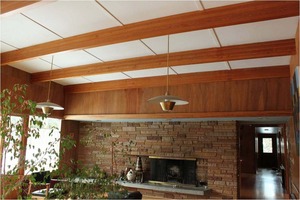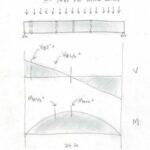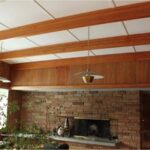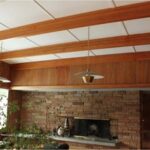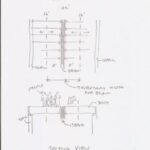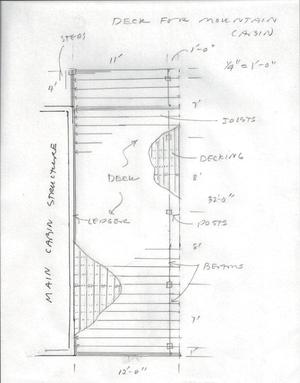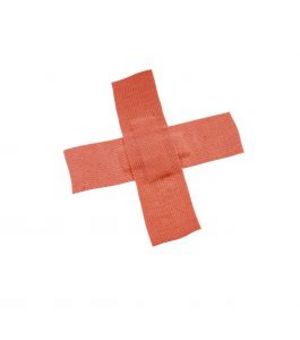In a previous article we discussed the investigation of the suitability of drilled vertical holes in wood beams. The context of such holes are those holes drilled for the passage of electrical conduit or other service materials, not holes for bolts, dowels, screws or other fasteners or devices that deliver or support significant structural loads.
As discussed in that article, a vertical hole in a beam reduces the structural carrying capacity of the beam. To accommodate such a hole, the beam must either have enough excess (structural) capacity to accommodate the loss, or a larger beam must be used. In that article it was shown that a simple alternative beam size is one with the same depth as originally specified but which is wider than the originally specified beam by an amount equal to 1.5 times the diameter of the hole. Alternatively, a beam with greater depth may be used; however, the determination of the appropriate depth is not as `simple’ as determining alternate width. Often, such determination is the role of the structural engineer. This article provides some guidance for such an engineer, or provides a `first shot’ or preliminary investigation of an alternate beam size that may be later verified by an engineer. Further, this article provides guidance for cases in which specific design information is not immediately available.
Consider a 6-3/4 inch (in.) wide by 25.5 in. deep laminated wood beam, 24 feet (ft) long, supporting a floor. The `grade’ of the beam is found to be 24F-V4 DF/DF (mark or tag on the beam). A single vertical hole of ¾ in. diameter is proposed, at or near the middle of the span. Technical Note 19 of the American Institute of Timber Construction (AITC) tells us that the effect of a vertical hole is `the same as’ taking away a vertical strip of beam 1.5 times as wide as the diameter of the hole. Thus, for a ¾ in. diameter hole, the effect is that of losing 1.5 times ¾ in. or 1-1/8 in. of width. In terms of percentage, the beam above loses 1-1/8 divided by 6-3/4 equals 17 % of its effective width (at the hole). Since the flexural (bending) capacity of the beam is directly proportional to its width, the hole reduces the bending capacity of the beam by 17%.
The `easy’ answer of the previous article is to simply use a beam that is 17% larger.
Bending capacity of a beam, however, is NOT directly proportional to its depth. We DO, however, still need a beam that is 17% stronger.
Using the AITC Beam Capacity Table for Douglas fir beams carrying floor loads, we find that the capacity of a 6-3/4 x 25-1/2 beam (without the hole), spanning 24 ft, is 1809 plf (pounds per lineal feet, AITC, Table DF-27, http://aitc-glulam.org/pdf/Capacity/DF_27.PDF). To determine the depth of a similar beam of the same width, one must be selected that has 17% more capacity than that without. In this case, a beam with a capacity of 1809 plus 17%, or 2117 plf, is sought. From the same AITC capacity table, for the same span, a size of 6-3/4 x 28-1/2 carries 2235 plf, more than enough.
Note that the alternate beam is 3 in. deeper, more than the 1-1/8 in. wider alternative. The deeper beam will reduce headroom a bit. While the added depth is more than twice the alternate added width, due to the shape of the beam, the added depth of the beam is likely more efficient. Indeed, an increase in depth of 3 in. is only a 12% increase in depth (and it was more than enough increase in capacity).
Note: for all of the alternate sizes discussed it is assumed that the beam has not been installed, and thus an alternate size is practical in the construction process. In cases where a beam is already installed, and then the question of drilled holes arises, the question of excess capacity in the existing beam is generally investigated. (Excess capacity of originally specified or installed beams is the topic of other articles.) Where excess capacity in an installed beam is not sufficient to accommodate a hole, the hole must not be drilled. Otherwise beam replacement, repair, or reinforcement will be necessary.
Note: the 24F-1.8E DF/DF grade designation is the same as the Fb 2400, E 1.8 million of the AITC DF-27 Table.
References
Vertical Holes in Wood Beams, Jeff Filler, YAHOO! Voices.
Guidelines for Evaluation of Holes and Notches in Structural Glued Laminated Timber, Technical Note 19, American Institute of Timber Construction, Centennial, CO, July 2012.
Beam Capacity Table DF-27, http://aitc-glulam.org/pdf/Capacity/DF_27.PDF, American Institute of Timber Construction, http://www.aitc-glulam.org.
Evaluation of Vertical Holes in Glulam Beams , Jeff Filler, YAHOO! Voices.
Alternative Calculations for the Suitability of a Drilled Vertical Hole in a Wood Beam , Jeff Filler, YAHOO! Voices.
